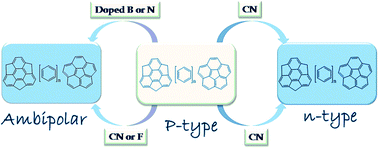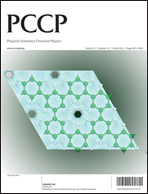Conjugate acene fused buckybowls: evaluating their suitability for p-type, ambipolar and n-type air stable organic semiconductors†
Abstract
Elaborate and exhaustive first principles calculations were carried out to screen the novel properties of a series of


 Please wait while we load your content...
Please wait while we load your content...